The exhibition Lorenzo Lotto. Retratos, which can be visited until Sept. 30 at the Museo del Prado in Madrid, proves that it is still possible to create exhibitions of works of art that are not solely and exclusively of the “blockbuster” type. Lorenzo Lotto. Retratos, jointly organized by the Museo del Prado in Madrid and the National Gallery in London, is an intelligent exhibition, with attention to every small detail and which sensitively immerses the visitor in the Italian artistic context of the 16th century.
For tourists from all over the world who populate the Prado Museum every day, the name of Lorenzo Lotto (Venice, c. 1480 - Loreto, 1556/1557) will be completely unknown. For this reason, the two curators, Miguel Falomir, director of the Prado, and Enrico Maria Del Pozzolo, professor at the University of Verona, have made a more than courageous choice, focusing on the portrait production of an unquestionably important sixteenth-century Italian name, but one with little appeal for the visitor. The stubbornness in pursuing this project has been rewarded daily by the large influx of visitors who have been populating Halls A and B of the Prado Museum’s Building de los Jerónimos on a daily basis since its opening last June 19.
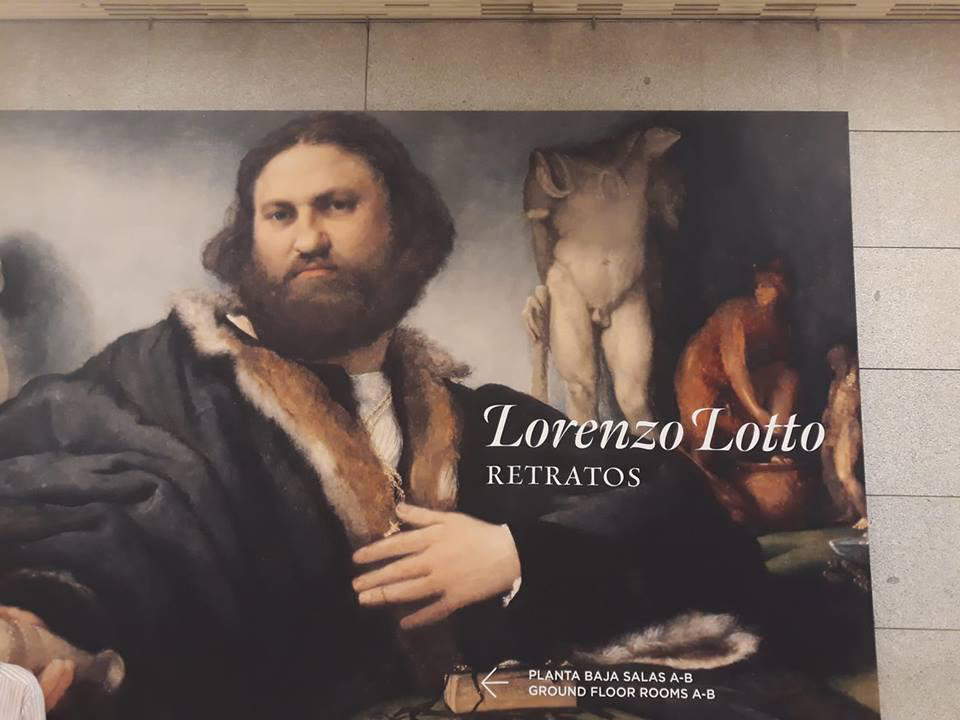 |
| Entrance to the exhibition Lorenzo Lotto. Retratos at the Prado in Madrid. Ph. Credit Francesca Della Ventura |
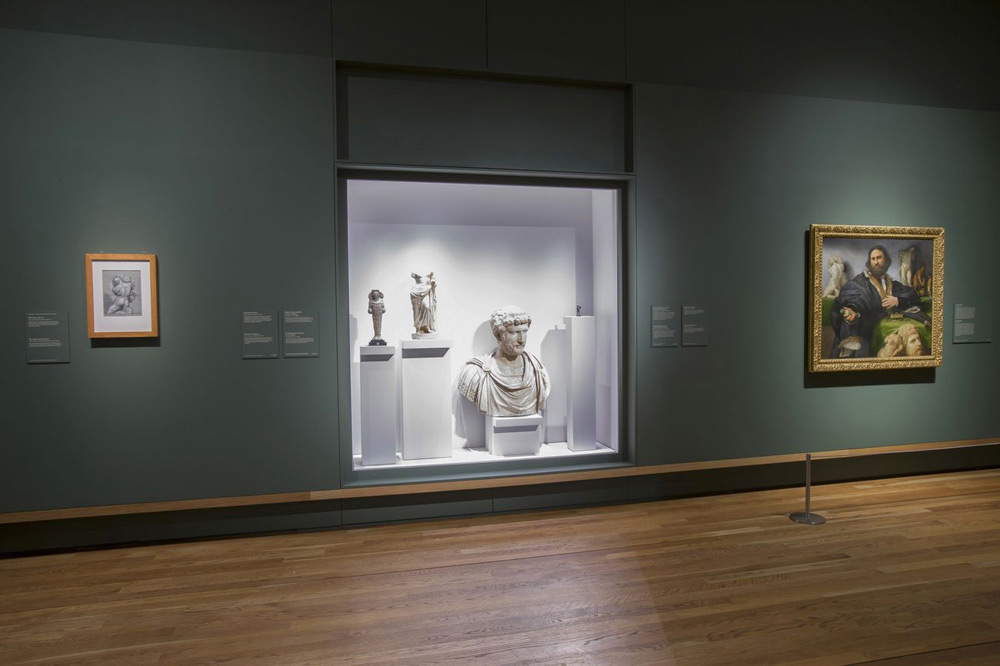 |
| Hall of the exhibition Lorenzo Lotto. Retratos at the Prado in Madrid. Ph. Credit Museo del Prado |
There are as many as thirty-eight portraits by the Venetian artist on display, to which are added a print and about fifteen pieces including sculptures and various objects represented in the paintings, on display with the aim of offering a reflection of the material culture of the time. The loans are important: among the many institutions present are the Metropolitan Museum in New York, the National Gallery in Washington, the Gallerie dell’Accademia in Venice, the Rijksmuseum in Amsterdam, the British Museum and the National Gallery in London, the Capodimonte Museum in Naples, the Pinacoteca Brera in Milan, and the Thyssen Museum in Madrid. As mentioned above, the exhibition has been organized jointly with London’s National Gallery where it will be possible to visit it just after the Madrid stay, and in its “British” guise it will be curated by Matthias Nivel, curator at the National of 16th-century Italian painting. There is to be said that in the last twenty years there have certainly been exhibitions on Lorenzo Lotto, such as those in Washington, Bergamo, Paris, and Rome, however, none of them has ever focused exclusively on his portrait work.
Lorenzo Lotto is one of the most interesting portrait pain ters of the Italian Renaissance. After his death between 1556 and 1557 in Loreto, his figure and artistic activity fell into total oblivion until the art historian Bernard Berenson published his celebrated monograph dedicated to him, Lorenzo Lotto. An Essay in Constructive Art Criticism (1895). In this text Berenson designates him as the first true modern portraitist because of his unquestioned ability to depict, along with the plastic components, the psychological characters of the portrayed characters, thanks also to the explicit or occult symbolism present in his works. The psychological depth and meticulousness with which he depicts the attributes of his characters make his works still extremely interesting and, above all, relevant today, especially in a contemporary society interested more in the individual than in the collective.
The thirty-eight portraits created by Lotto and displayed in the exhibition are the result of his itinerant artistic activity in Italy: from his native Venice, via Treviso, Bergamo, Rome and the Marche. Looking at his portraits, the artistic influences of late 15th- and early 16th-century Venice are evident: Antonello da Messina, Giovanni Bellini, Dürer (who, as we know, stayed in Venice as early as 1494), Giorgione, Raphael, Leonardo and, of course, Titian. As the curator himself, Miguel Falomir, states, the innovations introduced by Lorenzo Lotto in portraiture are several: first, the painter cleverly converted portraits into narratives. He always remained faithful to his models, but he was able to sensitively readapt them by making a completely personal interpretation. Moreover, Lotto managed with great skill to incorporate several unprecedented typologies, such as, for example, that of the first marriage portraits in Italy, suffice it to mention the ’Portrait of Marcilio Cassotti and his bride Faustina, preserved right in the Prado Museum.
| Lorenzo Lotto, Portrait of Marsilio Cassotti with his wife Faustina (1523; oil on canvas, 71 x 84 cm; Madrid, Museo del Prado) |
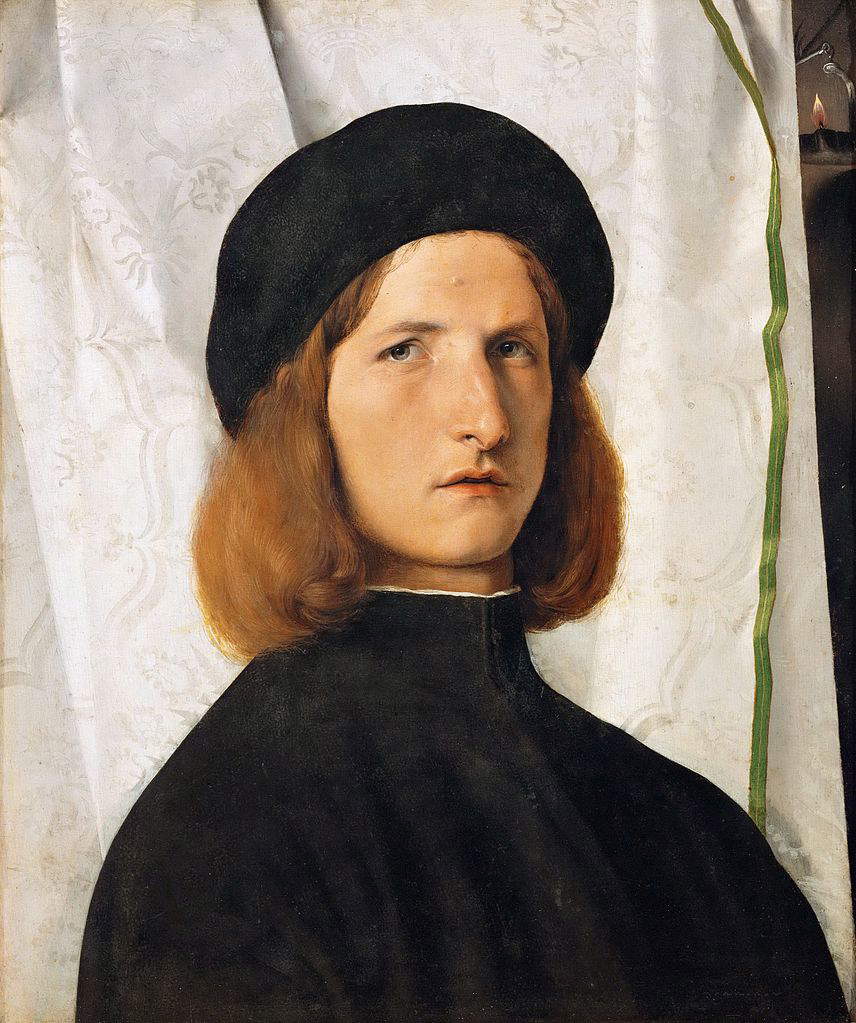 |
| Lorenzo Lotto, Portrait of a Young Man with Oil Lamp (c. 1506; oil on panel, 42.3 x 35.3 cm; Vienna, Kunsthistorisches Museum) |
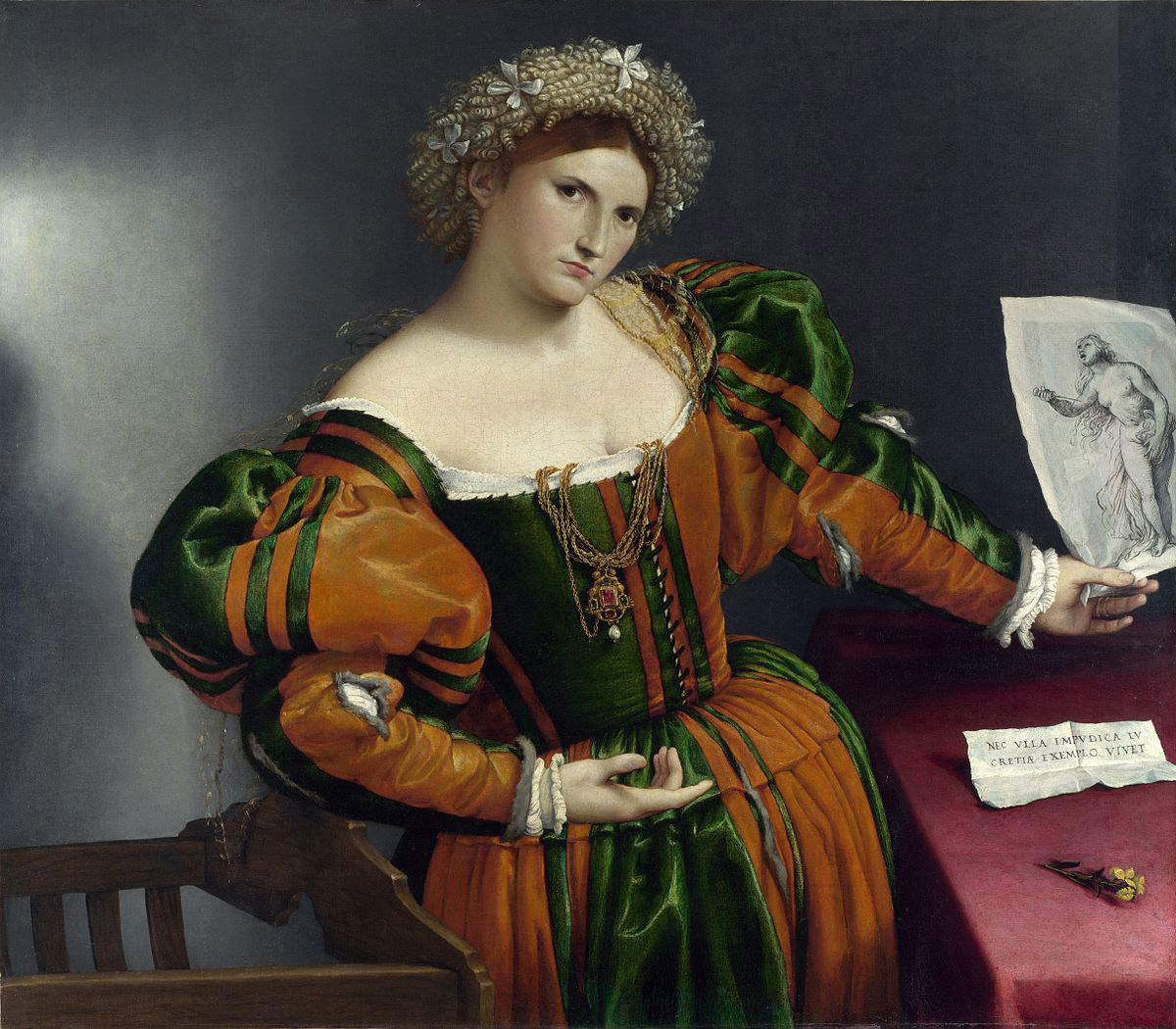 |
| Lorenzo Lotto, Portrait of a Lady as Lucretia (c. 1530-1533; oil on canvas, 96.5 x 110.6 cm; London, National Gallery) |
 |
| Lorenzo Lotto, Portrait of a Young Man (c. 1498-1500; oil on panel, 34.2 x 27.9 cm; Bergamo, Accademia Carrara |
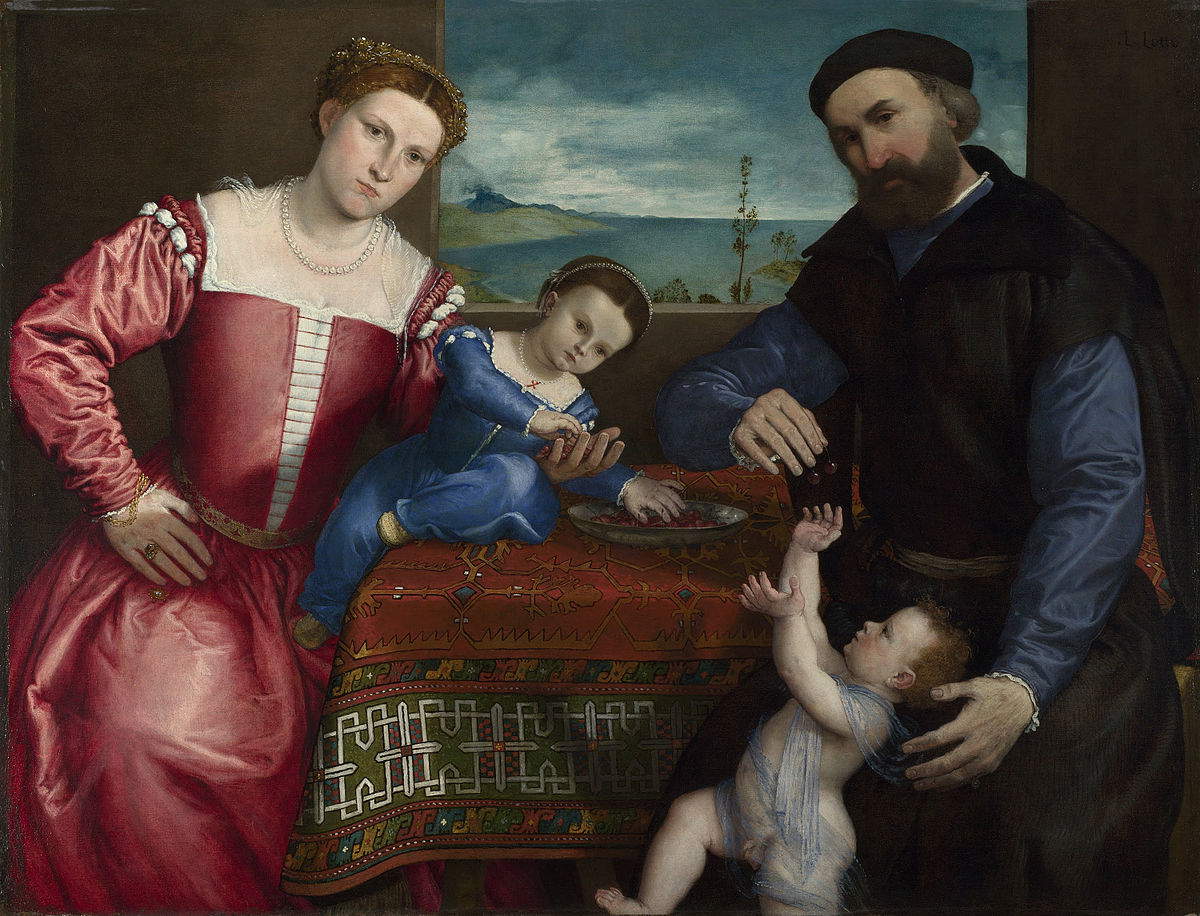 |
| Lorenzo Lotto, Portrait of Giovanni della Volta with wife and children (1547; oil on canvas, 104.5 x 138 cm; London, National Gallery) |
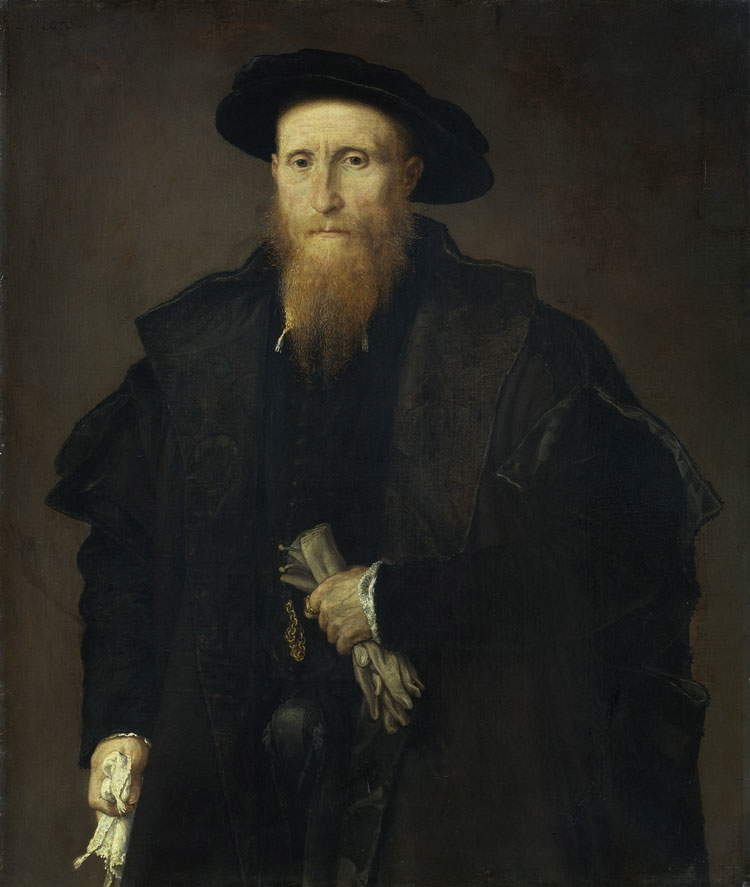 |
| Lorenzo Lotto, Gentleman with Gloves (Portrait of Liberale da Pinedel?) (1543?; oil on canvas, 90 x 75 cm; Milan, Pinacoteca di Brera) |
The layout of the exhibition is straightforward and usable: divided into chronological and geographical sections, each painting is often accompanied by sculptures and objects from the period that are represented in the paintings and serve to contextualize them and offer the visitor a reflection of the material culture of the time. Among the works on display are, to name a few, the “Portrait of a Young Gentleman in His Study” from the Gallerie dell`Accademia in Venice, the “Portrait of a Young Man with Lucerne” from the Kunsthistorisches Museum in Vienna, the “Portrait of a Woman as Lucretia” from the National Gallery in London, the “Portrait of a Young Man” from the Academy of Bergamo, the “Portrait of Giovanni della Volta with His Wife and Children,” from the National Gallery in London, and the “Portrait of Men with Gloves” from the Pinacoteca Brera in Milan.
Lorenzo Lotto. Retratos is indeed a beautiful exhibition, rich in works and above all new in the museum scene. It is an intelligent and daring project that really shows, contrary to the policies adapted by many museums, picture galleries and art galleries today, that it is not necessary to only make exhibitions with “big names” and curated without any scientific criteria to approach popularization. On the contrary, “popularize” means “to spread among the uninitiated,” and this also implies turning the spotlight on artists or artistic periods that are still little known. The public always repays well the effort made in this direction, and the Madrid-London exhibition on Lotto is proof of this.
Warning: the translation into English of the original Italian article was created using automatic tools. We undertake to review all articles, but we do not guarantee the total absence of inaccuracies in the translation due to the program. You can find the original by clicking on the ITA button. If you find any mistake,please contact us.